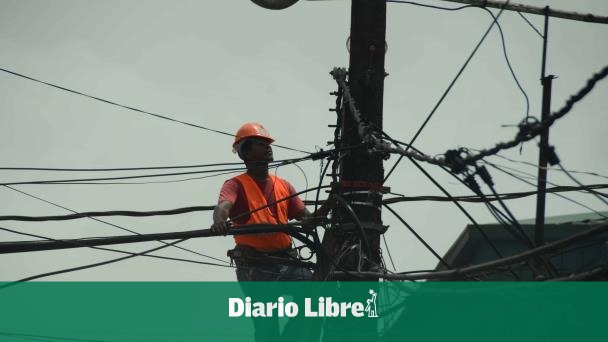DR leads countries experiencing energy losses

Not all electrical energy that is produced is sold and billed. Therefore, all electricity distribution companies cause losses that can be technical or commercial. In both cases, the lost surplus constitutes a negative economic impact on the government, which has to buy more energy to supply the homes.
Although the Dominican Republic managed to reduce energy losses At about 3.4% annually, it continues to top electricity loss statistics compared to four countries with similar data, according to the Energy Monitor of the Ministry of Economy, Planning and Development (MEPyD) corresponding to last April, but recently published.
Part of the energy produced by generators is distributed in the Interconnected National Electrical System (SENI), another part is used to maintain distribution equipment and programs in proper working condition, and a percentage is lost in the marketing process due to lack of storage.
MEPyD analyzed the country’s power distribution performance from 2016 to 2019 and compared it with other countries with similar data on electricity, through its Energy Monitoring.
The result of the analysis by MEPyD indicates that the Dominican Republic leads the percentages of the largest losses with 28.4%, after comparing data on annual percentages of energy losses for electricity distribution companies in Kenya (19.6%), Uganda (17.5%), Panama (13.6%) and Costa Rica (10.5%).
local show
From 2017 to 2021, electricity distribution companies (EDEs), on average, reported losses of 30.4% of the amount of energy they had to provide electricity service. Edeeste, with a loss of 42.6%, outperforms Edenorte, which scored 30.4%, and Edesur, with 22.9%.
The Ministry of Economy indicates in the document that the commercial efforts made by the economic development entities have made it possible to increase the number of liberated clients, as well as the number of departments that provide their services without interruption, which contributes to improving losses.
The document highlights that the three distribution companies increased their billing customer base with an annual average of between 11,000 and 59,000 new customers. Edesur increased its billing customer base by approximately 59,097 and recorded an average loss reduction of 0.9 percentage points.
Similarly, Edenorte provided an average increase of 53,659 clients and an annual decrease in losses of 1.5 points. Whereas in the case of Edeeste, the relationship is different: the average annual increase in equivalent clients was 11,161, accompanied by an average increase in losses of 3.2 points.
Regarding the analysis of losses recorded in SENI, the report highlights that “the commercial management of EDE entities has not been able to add value to the assets under management” and considers part of the solution, in the mid-term, the possibilities of incorporating more renewable energy as well as energy storage and its installation digital counters.
“This way, the electrical system can grow with less deficit and more energy independence in the country,” he says.
digital counters
Another aspect that could be favorable for a country to efficiently manage its supply system is the installation of smart meters that allow real-time assessment of each household’s energy consumption to redirect excess energy to storage or other production areas that require it.
The Energy Monitor of the Ministry of Planning and Social Affairs has evaluated the development of internationally installed smart meters and suggested local testing in selected sectors through which they estimate the various benefits to users and the state, by reducing waste.
The ministry calculates that losses for the first year are estimated at 25.0%, while for the second year this percentage can be reduced to 20%. Between years three, four and five, losses will drop to 15% until they reach 13% as of 2025.
It is clear that, given the efficiency of this difference, the deficit can be reduced by as much as 8 or 10%. In terms of billing, it indicates that if this technology were adopted in 2020, the bills would have been 59.1 GWh higher than those recorded.
In this order, it is considered that there must be integrity between the data sent by digital counters and billing processes. This involves significant changes in traditional business operations. But they caution that without major changes in the business and management culture of distribution companies, the expected benefits from the technology will not be achievable.

“Award-winning zombie scholar. Music practitioner. Food expert. Troublemaker.”








